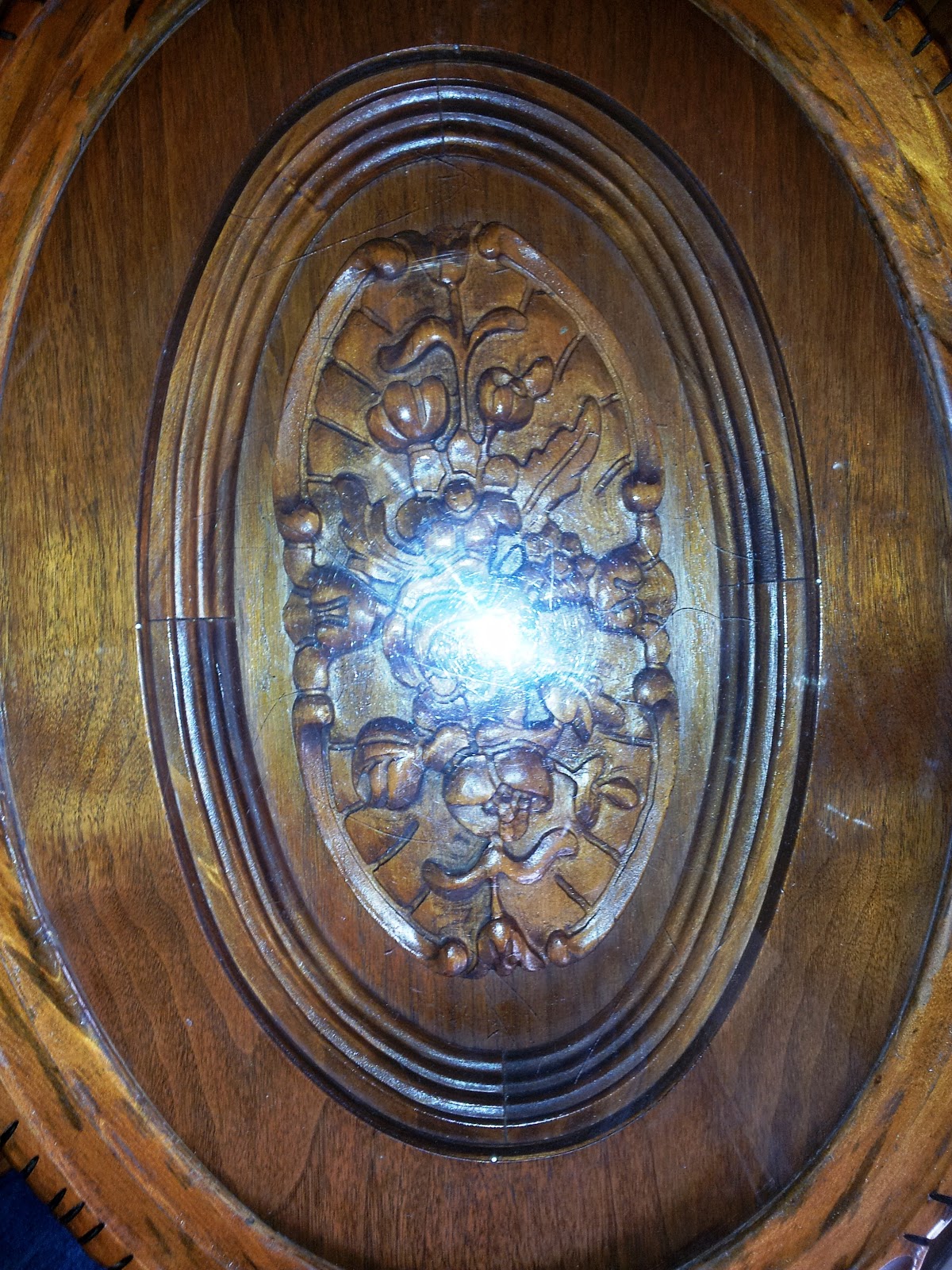 My customers reported how she has carried this little beauty with her as a coed ...and then even as an airline passenger! I think that's showing a lot more than a little affection for this piece of art--and it's just plain FUN. The piece's wonderful walnut carving of flowers and vegetables is reliefed below the protective glass cover. Its legs and skirt are similarly carved of a softer bold grained wood, like a conifer--cedar or pine...or maybe gum.
My customers reported how she has carried this little beauty with her as a coed ...and then even as an airline passenger! I think that's showing a lot more than a little affection for this piece of art--and it's just plain FUN. The piece's wonderful walnut carving of flowers and vegetables is reliefed below the protective glass cover. Its legs and skirt are similarly carved of a softer bold grained wood, like a conifer--cedar or pine...or maybe gum.Inspecting it very carefully I could not for sure determine if it was a 1950's replica of an Elizabethan piece or whether it was indeed Elizabethan (1830's to around 1900). Whichever, it is absolutely exquisite. Hand carved and hand made throughout, this gentle lady is a real eye grabber. At some point in the past it was re-coated with shellac. Before that....varnish or oil?
My customer has recently moved from another part of the country. In the process the legs of this little gem were severely racked and loosened. It had the motion of a rocking chair--but no longer. It stands now firmly, confidently, on those four beautiful legs. Before it went back home I gave it a treatment of (Guardsman) polish which contributed a warm, pleasant glow that is quite appropriate for any Genteel Lady.
That's Wood Talkin for today.Are you listening...cuz wood talks





